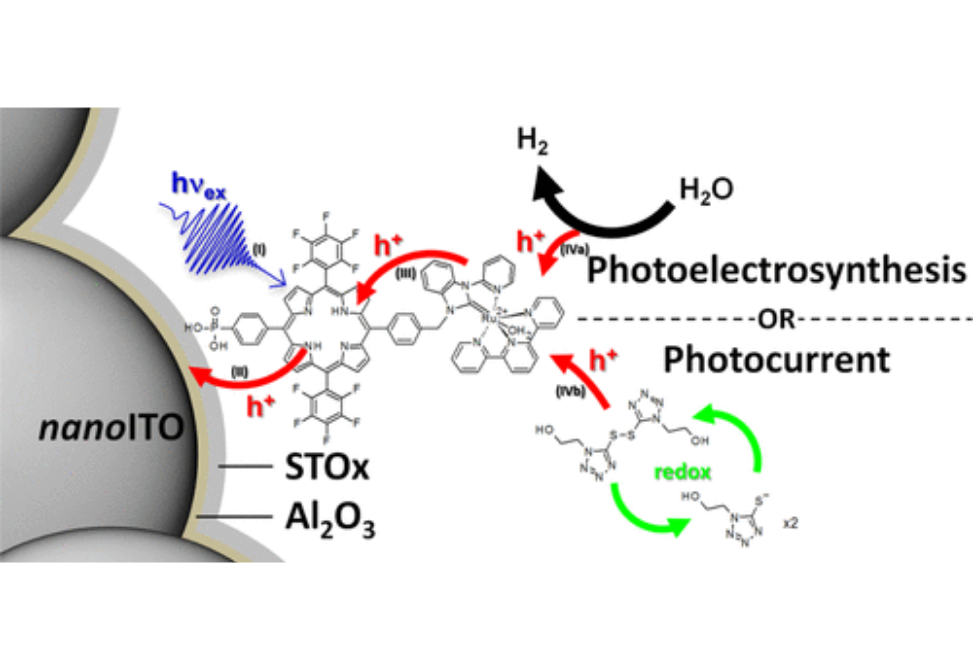Dye-Sensitized Nonstoichiometric Strontium Titanate Core–Shell Photocathodes for Photoelectrosynthesis Applications
Abstract
A core–shell approach that utilizes a high-surface-area conducting core and an outer semiconductor shell is exploited here to prepare p-type dye-sensitized solar energy cells that operate with a minimal applied bias. Photocathodes were prepared by coating thin films of nanocrystalline indium tin oxide with a 0.8 nm Al2O3 seeding layer, followed by the chemical growth of nonstoichiometric strontium titanate. Films were annealed and sensitized with either a porphyrin chromophore or a chromophore–catalyst molecular assembly consisting of the porphyrin covalently tethered to the ruthenium complex. The sensitized photoelectrodes produced cathodic photocurrents of up to −315 μA/cm2 under simulated sunlight (AM1.5G, 100 mW/cm2) in aqueous media, pH 5. The photocurrent was increased by the addition of regenerative hole donors to the system, consistent with slow interfacial recombination kinetics, an important property of p-type dye-sensitized electrodes.
Citation
Dye-Sensitized Nonstoichiometric Strontium Titanate Core–Shell Photocathodes for Photoelectrosynthesis Applications
Caroline E. Reilly, Robert J. Dillon, Animesh Nayak, Shane Brogan, Taylor Moot, Matthew K. Brennaman, Rene Lopez, Thomas J. Meyer, and Leila Alibabaei
ACS Applied Materials & Interfaces 2021 13 (13), 15261-15269
DOI: 10.1021/acsami.1c00933


